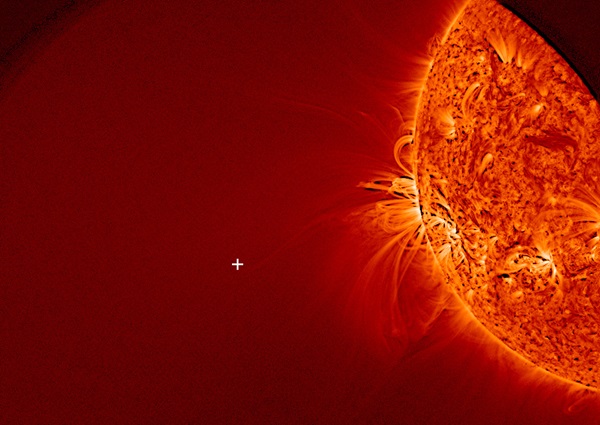Key Takeaways:
UPDATE: Comet ISON may have survived
Comet ISON went around the sun on Nov. 28, 2013. Several solar observatories watched the comet throughout this closest approach to the sun, known as perihelion. While the fate of the comet is not yet established, it is likely that it did not survive the trip. The comet grew faint while within both the view of NASA’s Solar Terrestrial Relations Observatory, and the joint European Space Agency and NASA’s Solar and Heliospheric Observatory. The comet was not visible at all in NASA’s Solar Dynamics Observatory.
“We didn’t see Comet ISON in SDO,” said Dean Pesnell, project scientist for SDO. “So we think it must have broken up and evaporated before it reached perihelion.”
While this means that Comet ISON will not be visible in the night sky in December, the wealth of observations gathered of the comet over the last year will provide great research opportunities for some time. One important question will simply be to figure out why it is no longer visible.
Credit: NASA/SDO/ESA/SOHO/GSFC










